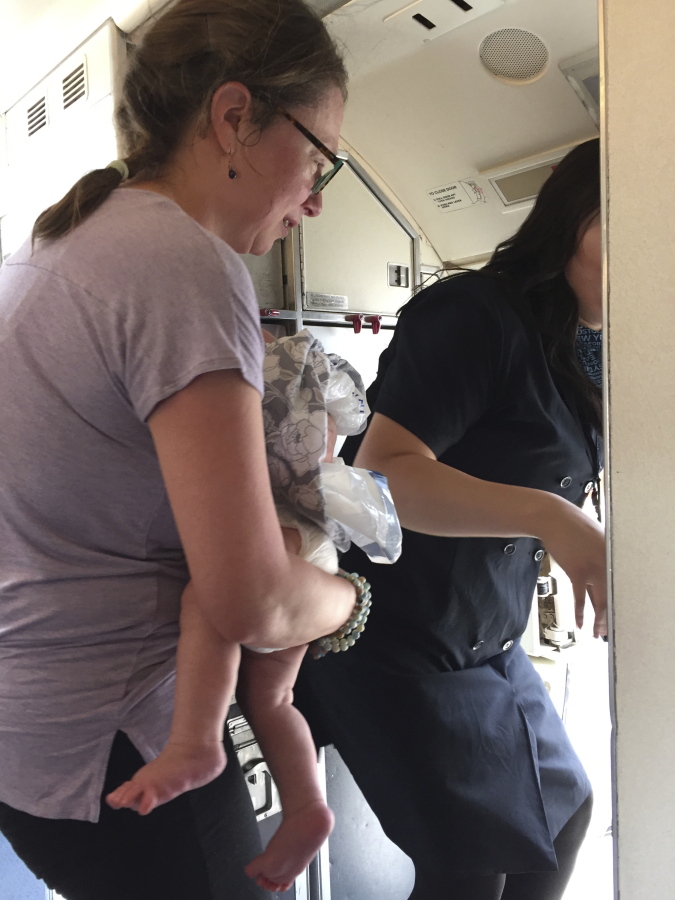DENVER — Every day, tens of thousands of U.S. airline passengers settle into their seats, lower the window shades and reach up to twist the air vents without the benefit of something that might do even more to keep them cool: a rule setting temperature limits inside the cabin.
Airlines have their own guidelines — some allowing the mercury to hit 90 degrees — and federal regulations cover air flow and, more generally, passenger safety and comfort.
But nowhere do authorities say how hot is too hot when a plane is sitting on the ground — a fact illustrated this summer when a mother holding her beet-red infant had to plead to be let off a broiling regional jet stuck on the tarmac at Denver International Airport.
Emily France said she and her 4-month-old son, Owen, sweltered aboard the 50-seat “oven with wings” for more than an hour June 22 before it returned to the gate and passengers were allowed off briefly.
When they re-boarded the United Airlines flight to El Paso, Texas, the cabin felt even warmer, France said. With the flight delayed again, she stripped off Owen’s clothing and applied ice bags brought by flight attendants, but his condition deteriorated.
“I heard a cry from my son that I have never heard before, and his skin looked a color that I had never seen before, and I knew he was in trouble,” she said. “Then he just stopped crying. And he went limp in my arms.”
“I said, ‘Get an ambulance and get me off the plane,'” she recalled.
She and the boy were taken away by ambulance. Doctors determined the baby suffered no lasting effects.
France said she hopes federal regulators take note, and she has hired a lawyer who specializes in airline safety law. He is demanding an explanation.
“There is no reason why heat bad enough to cause people to pass out is happening in cabins,” attorney David Rapoport said.
Authorities have heard complaints for years about stifling heat aboard airliners, though the Federal Aviation Administration does not keep track of how many.
To save fuel, pilots sometimes turn off the air conditioning when the plane is at the gate or taxiing, though some airports have ground AC units at the gates that pump cool air into the aircraft while it waits to push back. Sometimes the onboard air conditioning malfunctions or can’t keep up.
During the summer of 2013, several passengers on a delayed Allegiant Air flight fell ill as their plane sat on the tarmac in the blazing desert heat in Las Vegas. A month later, more than 150 Allegiant passengers were forced to sweat it out for 2 1/2 hours in Phoenix after a maintenance problem knocked out air conditioning on the plane.
Allegiant decided in September to spend more than $1 million on six, 60-ton cooling units for use at the Las Vegas airport, said Michael Bowers, director of base operations.
The FAA declined to comment on the need for specific rules on cabin temperature when a plane is on the ground. But the agency noted in a statement that it specifies how many pounds of fresh air planes must pump through the cabin per minute and per passenger.
United apologized to the mother but had no explanation of what went wrong.
“This should never have happened,” United spokeswoman Maggie Schmerin said. “We are profoundly sorry to our customer and her child for the experience they endured. “



